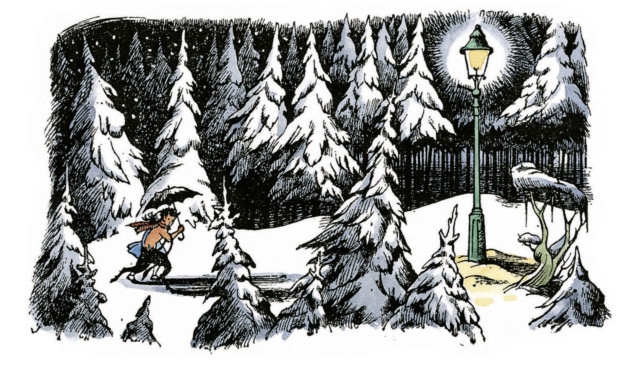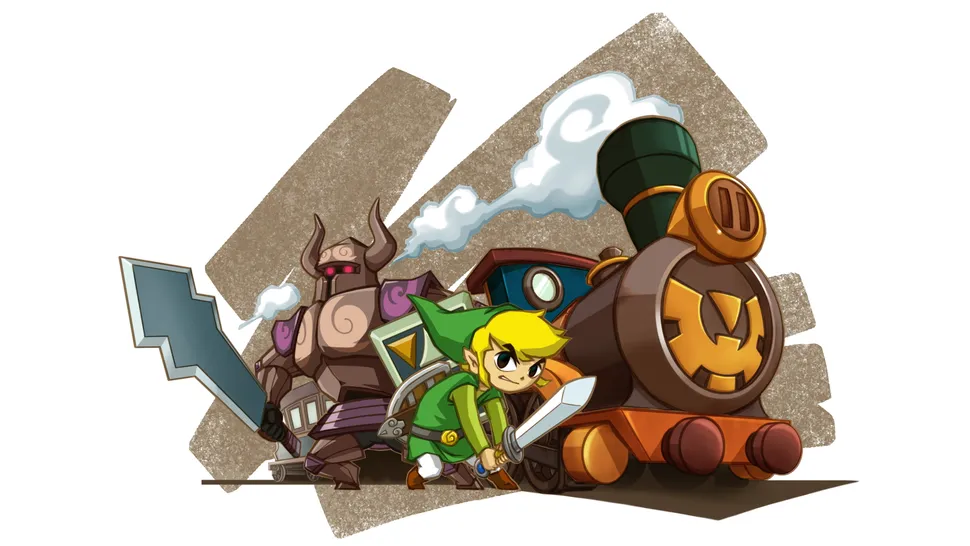The Unreal World (original) (raw)
I’d seen this map, created by Dan Meth, a few times before. It just showed up on Tumblr, and I love all the commentary it’s generated. I appreciate that Meth included places from television, movies, and video games (well, one video game) instead of just ones from books, and that he usually used the general shape of the locations that have existing maps. There’s a list of the source material here. What the map doesn’t respect, and this kind of crossover map pretty much can’t respect by its very nature, is the context of these places. Maybe this isn’t something that can or should be taken that seriously, but I am always interested in the explanations of how fantasy worlds work. And I do like the idea of different fictional places being linked to each other, but sometimes it’s almost impossible to make work. Middle-Earth is generally presented as having existed in the distant past, about 6000 years before it was written, and is now just part of Eurasia. And that, as well as Oz, Narnia, and Hyrule, has other places nearby that aren’t shown on the map. I understand that’s also the case with Westeros, although I’ve never gotten into Game of Thrones. With a name like that, though, it makes sense that it would be west of something. Whoville is located on a dust speck, and since it’s unlikely that everything on the map also is, does that mean its location actually signifies Horton’s home in the Jungle of Nool? And that’s presumably in our world, since Maysie goes on vacation to Palm Beach in the elephant’s other book. I’m curious as to how many of Dr. Seuss’s invented lands could potentially be mapped; he tends to mix real and made-up places, like how the Once-ler’s directions for reaching the Truffula forest include Weehawken. A similar explanation to the dust speck one could be used for why the wardrobe is shown as being IN Narnia; that’s presumably actually Lantern Waste, where the wardrobe transported the Pevensies.
If so, it’s correctly placed on the west side of the country. We all know that the city of War Drobe is in the Land of Spare Oom. I don’t know about Camelot being in Avalon, though, unless it was transported there after King Arthur’s time. And Avalon should be an island. J.R.R. Tolkien did suggest a connection between Avalon and his Tol Eressea.
I understand Sodor is explicitly said to be near the Isle of Man. The map shows it close to Hyrule, and there is one Zelda game that has trains, although that’s set in the new Hyrule after the old one flooded.
As far as other places that are said to be in our world, Florin is from The Princess Bride, which references real-world locations; Dinotopia (another one I’m not that familiar with) is said to be in the Indian Ocean; Moominvalley is at least implied to be north of the Arctic Circle; Sir Thomas More presented Utopia as a crescent-shaped island somewhere in the Western Hemisphere; and Gulliver claims to have gotten to Lilliput after being shipwrecked between Sumatra and Tasmania, although the details he gives don’t really add up. Also, Blefuscu isn’t on the map.
Specifically NOT on Earth is Nehwon, an entire world, although its depiction on the map does accurately reflect the landmass on which the city of Lankhmar is located. The Land of the Lost is reached by means of a waterfall, but is apparently actually in an alternate universe. I do appreciate that the dinosaur-themed places are next to each other, even if that isn’t possible. Thra in The Dark Crystal is its own world with three suns and three moons.
I think Krull is also its own planet, unless they mean Krull on Discworld, which would add further confusion. I don’t think there’s ever any indication as to where Earthsea is relative to anywhere else, or if there’s even anything beyond it. Narnia is not only in an alternate universe but presumably no longer there, its world having only existed from 1900 through 1949 of our time according to C.S. Lewis’ timeline. There is the new Narnia in The Last Battle, but that’s a version of Heaven, and doesn’t make a lot of sense. As I’ve discussed before, the location of Oz is unclear, with L. Frank Baum seemingly changing it from a place on the North American continent to one in the Pacific Ocean, and later authors suggesting it might not even be physically on Earth. Of course, there’s always the possibility of being magically hidden, or of being associated with an Earthly location even if it isn’t physically there. Then there are places that aren’t even necessarily real within their own fictional stories. Wonderland, for instance, is presented as Alice’s dream. If it is real, would it be underground, as Alice got there through the rabbit hole? Or maybe it should be part of H.P. Lovecraft’s Dreamlands. The map of the lands surrounding Oz also includes a Kingdom of Dreams. Someone correctly pointed out that Fantasia (or Fantastica) should theoretically contain all other fictional worlds, and be infinite in size. But it’s still presented as having a consistent geography despite being affected by human imagination. The same could perhaps be said of Peter Pan‘s Neverland; it’s a physical place, but it reflects children’s ideas.
And I guess Where the Wild Things Are is ambiguous. Alice’s Adventures in Wonderland has so many spatial changes that it’s difficult to tell whether the country even has a consistent form, which fits with its nature as a dream-place. I haven’t read Bridge to Terabithia, but I know that wasn’t a real place even within the story. I have always wondered about how similar the name is to Terebithia, a country near Narnia.
This kind of thing is something I’m often weirdly concerned about. A show I watched as a kid and still think about way more than it probably actually merits, Captain N: The Game Master, was about a teenager from California being transported to Videoland, made up of all the places from Nintendo games that they wanted to promote and could get the rights to use. I’m fine with the totally fictional worlds sharing one universe; in fact, I quite like the idea. But Castlevania and Mega Man, among others, explicitly take place on Earth. And the backstory of Metroid involves Earth, even though I’m pretty sure none of the games are set there. Even King Hippo is supposed to be from an island in the Pacific Ocean. Maybe there are multiple Earths or isolated parts of our world, but it’s confusing; and I’m sure the show’s creators didn’t think much about it. One of my mostly facetious theories is that the gods really liked the design of Earth, so they just made it over and over again.

This was hardly the first map to combine places from multiple fantasy worlds into one. Another that I remember seeing before is Jaro Hess’s “The Land of Make-Believe,” from 1930. This one shows the Emerald City in the back on a cliff, but none of the rest of Oz; and Peter Pan not in Neverland. Most of the people and places on this one are from fairy tales and nursery rhymes with no specific locations, although Hamelin is in Germany, and Rip Van Winkle slept in the Catskills. And I think the City of Brass from the Arabian Nights is supposed to be in northern Africa.
Dick Martin’s Wonderful World of Oz Panorama, which I still have somewhere, is likely inspired by Hess’s map.
Bernard Sleigh’s Anciente Mappe of Fairyland, from around 1920, is even more ornate and detailed. There’s a list of the sources for all these places. A lot of it comes from Greek myth and Arthurian legend, which means that many of them were originally said to be located in, well, Greece and Great Britain, as well as other real locations nearby. And it doesn’t even fit the directions implied with, say, the Labyrinth (not the same as the one from the 1980s movie) being on Crete, or the Hesperides living beyond the Pillars of Hercules. Since the island of the Hesperides is known for apples and magical sisters who are caretakers, I tend to associate it with Avalon, although it’s not necessarily the same place. And I love the joke about Tom Thumb being too small to draw. I might have to check out The Shaving of Shagpat. I think I did read Phantastes, but while I enjoyed some other George MacDonald book, that one didn’t grab me. I know the comic series Fables presented the fairy tale world as one that mirrored our own, but with the territories being much bigger.
But it also incorporated some stories from totally fictional lands, and there were even indirect references to Narnia and Nehwon.
I never finished watching Once Upon a Time, but it had kind of the same thing, mostly stories that didn’t have a particular setting, but a few that did as well. Sir Lancelot and King Midas are associated with specific places in general time periods.
This entry was posted in Art, Arthurian Legend, Authors, British, C.S. Lewis, Captain N: The Game Master, Cartoons, Castlevania, Chronicles of Narnia, Dick Martin, Discworld, Dr. Seuss, Dreams, Fairy Tales, Greek Mythology, J.R.R. Tolkien, Jonathan Swift, L. Frank Baum, Lewis Carroll, Magic, Maps, Mega Man, Metroid, Mythology, Nursery Rhymes, Once Upon a Time, Oz, Oz Authors, Places, Punch-Out, Television, Terry Pratchett, Ursula K. LeGuin, Video Games, Zelda and tagged alice's adventures in wonderland, avalon, bill willingham, blefuscu, bridge to terabithia, camelot, crossovers, dan meth, dinosaurs, dinotopia, dreamlands, earthsea, emerald city, fables, fritz leiber, game of thrones, george macdonald, gulliver's travels, h.p. lovecraft, heaven, hesperides, horton hatches the egg, horton hears a who, hyrule, jaro hess, jonathan swift, jungle of nool, king arthur, king hippo, king midas, kingdom of dreams, krull, land of the lost, lankhmar, lilliput, michael ende, middle-earth, narnia, nehwon, neverland, once-ler, peter and wendy, peter pan, phantastes, rip van winkle, sir lancelot du lac, sodor, spirit tracks, the dark crystal, the fantasy world map, the land of make-believe, the last battle, the lion the witch and the wardrobe, the lorax, the neverending story, the pied piper of hamelin, the princess bride, the wonderful world of oz, thomas and friends, thra, timelines, tol eressea, tom thumb, videoland, washington irving, westeros, where the wild things are, whoville, wonderland. Bookmark the permalink.
